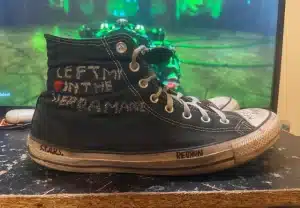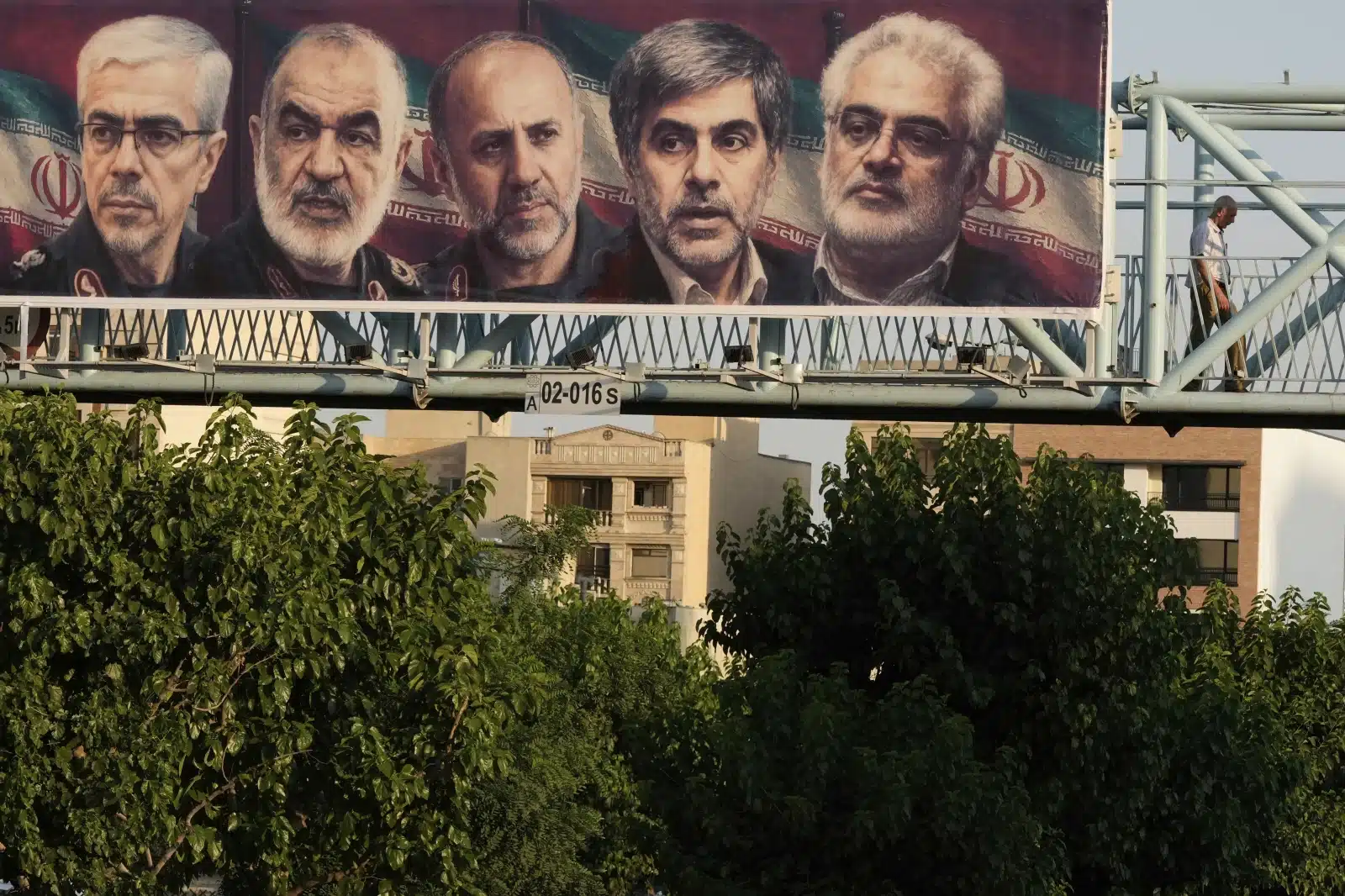Moonshot [Part 9] – A Religion For Real Life
Cryptocurrency is Deek’s last chance to succeed in life, and he will not stop, no matter what.
Previous Chapters: Part 1 | Part 2 | Part 3 | Part 4 | Part 5 | Part 6 | Part 7 | Part 8
“Be bold, be brave enough to be your true self.” – Queen Latifah
A Foolish Indulgence Bandar dropped the bucket of popcorn. The greasy kernels spilled all over his lap and onto the floor. He cursed and tried to rise, dumping the liquorice onto the floor as well, but the armed man seized his shoulder and pulled him back down. He shot a glance over his shoulder to his bodyguard, who began to stand, until the scarred man flicked open a knife and put the point to Bandar’s throat.
Bandar dropped the bucket of popcorn. The greasy kernels spilled all over his lap and onto the floor. He cursed and tried to rise, dumping the liquorice onto the floor as well, but the armed man seized his shoulder and pulled him back down. He shot a glance over his shoulder to his bodyguard, who began to stand, until the scarred man flicked open a knife and put the point to Bandar’s throat.
“Tell him to sit and relax,” the man whispered. “If I wanted to kill you, you’d already be dead.”
Bandar waved to the bodyguard to sit, and the hulk did so reluctantly.
“I asked if you know who I am.”
Sweat broke out on Bandar’s forehead. He closed his eyes. “You are the Palestinian detective. I don’t remember your name.”
“Zaid Karim. Why did you send men to kidnap Deek Saghir?”
“I don’t know what you are talking a-”
Zaid jammed the gun harder into Bandar’s ribs, making him grunt in pain, and snarled, “Listen, dope king -”
Bandar was outraged enough to momentarily forget his fear. “I don’t sell dope! Who told you that? Liquor and smokes, that’s my game.” In fact the Sinaloa cartel had tried to pressure him to use his network of shops as fronts for dope peddling, but he had refused, even when they threatened his life. So how dare this upstart accuse him of being a drug dealer?
“Whatever. I’m not in the mood for games. Answer my question.”
“He stole a car from my son.”
“That’s crap. I know Deek Saghir, he’s not a thief.”
“So my son is a liar?”
“You tell me. Is your son trustworthy?”
Bandar looked around. A few people were looking their way, annoyed that they were talking in the theater. But it was still just the previews, and in the darkness no one could see what was happening. Bandar was acutely aware of the gun against his ribs and the knife at his throat. He’d never felt so vulnerable in his life. He saw now that these Saturday movie nights were a foolish indulgence. Pain surged in his stomach, and he pressed a hand to it. Yet in the midst of it all, he sighed, for he had to admit that his son Shujaa was not trustworthy at all, and had most likely lied to him. And because of that, three of his men were dead, most likely killed by the maniac beside him.
A Name Spoken In WhispersIn spite of his fear, and his realization that Shujaa had played him, he put on a show of bravado and said, “I have more men where those came from.”
“And I have a lifelong friend who would do anything for me.”
“What friend?”
“Badger.”
 Bandar’s blood went as cold as ice. This was a name he’d heard spoken in whispers, the way one spoke the name of a demon. Badger was an independent killer who robbed and murdered drug dealers. It was said he had wiped out entire gangs, and was utterly remorseless. The number of men he’d killed could not be counted.
Bandar’s blood went as cold as ice. This was a name he’d heard spoken in whispers, the way one spoke the name of a demon. Badger was an independent killer who robbed and murdered drug dealers. It was said he had wiped out entire gangs, and was utterly remorseless. The number of men he’d killed could not be counted.
“That’s right,” Zaid said, reading Bandar’s reaction. “I’ll pit my Badger against your thugs any day. And if it comes to that, we won’t stop with your men. We’ll put you down too.”
“What is it you want, Zaid?” Bandar said finally.
“Don’t come near Deek Saghir again. I swear to you, if you harm him again or even look in his direction, I will return, and it won’t be to talk, and you won’t see me coming.”
“Done.”
Zaid jammed the gun harder into Bandar’s ribs. “And return the car. Leave it in the parking lot at Masjid Madinah, with the keys in it. Within one hour.”
Grimacing in pain, Bandar nodded. Shujaa would catch fire for this. It was back to Yemen for the little punk.
A theater employee approached, wearing black pants and a red vest, and shining a dim flashlight their way. “Hey. What’s going on here?”
Zaid Karim stood and walked out, leaving Bandar with popcorn in his lap and a sheen of sweat covering his entire body.
Queen LatifahOnce again, Deek dreamed that he was in the desert of southern Iraq, seeking the elusive cache of silver from the kingdom of Ur. He expected to encounter Shaykha Rabiah again, and a part of him dreaded her rapier-like judgment – but no -this time it was Queen Latifah, the famous actress and rapper, sitting casually in the shade of the ruined wall of an ancient caravanserai. She wore a flowing green robe and a green scarf that draped her head and chest, and was eating mac n’ cheese from a small pot. Deek could smell the cheddar tang, and it made his mouth water.
 “What’s up, Deek?” Latifah said.
“What’s up, Deek?” Latifah said.
“Isn’t it a bit hot for mac n’ cheese?”
“Not for me. This is Vermont white cheddar, baby. I would kill for this. Check this out. If you tell me a secret, I’ll tell you one.”
There was something wholesome and real about Latifah that made you trust her. A trickle of sweat ran down Deek’s face, and he wiped it with a dusty sleeve.
“I’m looking for a hidden treasure,” he said. “It’s somewhere near here. It’s priceless.”
Latifah laughed. “If it’s priceless, how would you spend it?”
Deek frowned. “That’s not the point.”
“Isn’t it? Well, I promised you a secret too. Here it is: I’ll never say no to mac n’ cheese, even at two in the morning.”
Deek scoffed. “I already knew that. I’ve known you since we were kids, remember?”
Latifah looked astonished. “I remember that now!” The wind kicked up a swirl of ochre dust, and Latifah covered the pot with her scarf. “My old friend Deek. Let me give you some advice. Be bold, be brave enough to be your true self.”
“This is my true self. I am determined to be rich. It’s my destiny.”
“I don’t think so. I mean, you might be rich, who can say? But I think your true self is the man who loves his wife, and thinks she’s an angel, and loves his daughters, and wants to make them happy. I should know. We’ve known each other since we were kids, remember?”
“I was thinking of changing my first name to Asad.”
“Lion! It suits you. There’s power inside you, dormant. If you unleash it you could change the world.”
“You speak Arabic?”
“I do here.”
It’s OverDeek awoke to the smell of candle smoke and the sound of cats meowing at the back door. The sky through the window was black, but the room was lit by five votive candles on the floor. From the kitchen came the soft murmur of the Quran being recited. He climbed out of bed, picked up a candle, and found Zaid Karim in the kitchen, seated at the candle-lit table, listening to the Quran on his phone and eating a sandwich that -judging from the powerful fishy smell- contained sardines.
“No wonder the cats are meowing, with that stench. Have you fed them?”
Zaid laughed. “You settled right in, it seems.”
“What is this place?”
“I told you in the note.”
“The Namer’s house.”
“Yes. She’s a Miwok medicine woman. Her real name is too difficult for most people to pronounce. She means everything to the people around here.”
“She’s a miracle worker. Look at me.” Deek held his arms out wide. “They beat me half to death, and I feel almost recovered. And I’m thinking more clearly. She could market this potion and get rich.”
“She’s happy with who she is.”
Deek shrugged. He felt like he was back in one of his recent dreams, with Shaykhah Rabiah asking him, Who are you? Or Queen Latifah telling him to be his true self.
“I don’t even know where we are, man,” Deek commented. “This doesn’t look like Fresno.”
“It’s definitely Fresno. East Belmont.”
Deek raised his eyebrows. East Belmont was the worst part of Fresno. No sane person went there, especially at night.
“I thought East Belmont was a no-man’s-land.”
“Hey, watch it. My office is in East Belmont, not four blocks from here. It’s a poor neighborhood with working-class people, that’s all.”
“So what’s next? How long do I have to stay here?”
“You don’t. It’s over. You won’t be bothered again. And I got your car back, it’s parked out front.” He reached into a pocket, then held up the keys and jiggled them.
“Really?” Deek snatched the keys and went outside to his car. There it was in the narrow driveway, as beautiful as ever. A minute later, he came back in and held something up triumphantly. “Bag of wavy chips, right under the seat where I left it!”
Zaid rolled his eyes. “I’m so glad I rescued you and recovered your car, so you could have your potato chips.”
Deek snagged a few chips and popped them into his mouth, then grimaced. The chips tasted overly salty, greasy, and disgusting. He dropped the bag on the table.
“They don’t even taste good,” he complained. “What did this Namer woman do to me?” On impulse, he took a tomato out of the basket and took a bite. The tangy, acidic flavor flooded his mouth. It was the best thing he’d ever tasted in his life. He groaned out loud. “This is incredible!”
Zaid nodded. “Her medicines are tailored to the person. Whatever she gave you is exactly what you need at the moment.”
Brutal and HardDeek’s face grew serious. “You have no idea how grateful I am. You truly saved my life. When you leaped into the van wearing your hat, I knew I was safe.” For a moment, he choked up and could not continue. He rubbed his eyes and cleared his throat. “Do you want a million dollars? Download a crypto wallet, and I will send you a million dollars in crypto right now.”
Zaid held up a palm. “I did this as a family favor, not for money. But if you’re determined to pay me, my rate is seven hundred dollars a day plus expenses. I’ve put in two days on this, so with expenses, call it fifteen hundred.”
Deek stared. The man was saying no to a million dollars? A bitter thought came to him, though the bitterness was distant somehow, not acidic and fiery as it would normally be for him.
“You don’t believe,” Deek said, “that I really have that much money, do you?”
“Oh, I believe it. I always believed in you, remember?”
Deek nodded, letting the shadow of bitterness go. “Yes, I remember. You told me to go the distance.”
“Did I?”
“You said, ‘Life is waves, peaks, and troughs. Prove you can persist, show that you can go the distance, and you will succeed, inshaAllah.’”
Zaid smiled. “MashaAllah. Yes, you’re a highly intelligent and determined man. I believe you one hundred percent. It’s just that…” The detective rubbed his face with one hand. “What I did was brutal and hard. It was necessary, but such things are not easy on the heart, Deek. If I were to take so much money for it, I would feel dirty.”
Deek didn’t know how to feel about that. It almost seemed like Zaid was saying that his money was dirty. That wounded his pride, and in any other circumstance might have angered him to a degree that he would have held a grudge. But considering what Zaid had done for him, he decided to let it go.
The New Generation“What do I do now?”
Zaid shrugged. “Whatever you want. If you’re asking me, I say go back to your family.”
“You sound like Queen Latifah.”
Zaid frowned. “Is she that elderly sister at Masjid Madinah?”
“No, Queen Latifah the rapper. She told me to be bold and brave enough to be my true self, and she says my true self is a man who loves his family.”
“You know Queen Latifah the rapper?”
“Sort of.” He snapped his fingers. He had forgotten about the messages from his family. “Feed the cats for me, will you? I have to do something.”
Zaid laughed again, but picked up the bag of cat food and a candle and headed out back. Deek retrieved his phone and settled into a chair.
He read the messages from his daughters first. They always texted. Youth of their generation considered voice calls and even voicemails old-fashioned, rude, and even aggressive.
It seemed to Deek that a lot of the new generation’s ideas came down to the avoidance of reality. The reality of the professional workplace, which required people to show up on time, dress appropriately, and write in complete sentences with proper grammar. The reality of honest communication, which must be face-to-face, not TikTok and YouTube-based. Even the reality of the male and female gender, which was what it was, not what people imagined it to be.
This was something that Deek liked about Islam, though he was by no means a good example of a Muslim. Islam was a religion created by Allah for human beings as they truly were, in all their glory, brilliance, love, misery, and self-degradation. Everything from the prohibitions of intoxicants and gambling -two of the most socially destructive sins ever invented- to the worship practices of salat, Hajj, and fasting in Ramadan, which were all powerful communal spiritual experiences, not to mention physically transformative.
Even Islamic economics: zakat -which was a tax on long-term capital holdings rather than income-, and the prohibition of charging interest. Taken together, these were brilliant strategies to prevent the exploitation of the poor and stop the accumulation of vast wealth in the hands of a few people, while maintaining the free market. It was amazing stuff, providing real solutions for real people.
Still A TeamThere were two texts from Sanya, his elder daughter. “What’s up, Dad? Hearing strange things from Mom. Everything alright? Let me know.” And, “Just checking in.”
That was typical Sanaya. She found emotional expression embarrassing. It was always straight to business with her. She used brevity like a shield against the world.
He replied: “All is well. Mom and I are just having a fight like we do. Not a big deal.”
Amira’s messages were more anxious and poignant:
“Baba, I don’t know what’s going on, but come home and work it out. We’re a family. I walk in your shoes and you walk in mine.”
 This made Deek sad, or at least he thought it did, for the sadness was distant, not painful. Amira’s words came from an old blues song, “Walk a Mile in My Shoes,” and was something he always used to say to the girls when they were young. “Nobody knows what it’s like to walk in your shoes except your own family. I walk in yours every day, and you walk in mine.”
This made Deek sad, or at least he thought it did, for the sadness was distant, not painful. Amira’s words came from an old blues song, “Walk a Mile in My Shoes,” and was something he always used to say to the girls when they were young. “Nobody knows what it’s like to walk in your shoes except your own family. I walk in yours every day, and you walk in mine.”
Amira’s next message read, “This is a mid-life crisis, isn’t it? Mama says you apparently made a lot of money, that’s a barakah, right? The new car is fly. But Mama is upset, and I don’t like that. You better get back to me today or I will hunt you down.”
That made Deek laugh. There were a few more messages like that. But the last message cut through the strange anti-emotional armor that surrounded him and pierced his heart: “Don’t leave me, Baba. We’re supposed to be a team!”
He stood and took a deep breath. He’d always imagined that if he hit it big in crypto, all their lives would change. And he still believed that. But he’d thought it would happen for all of them together. Things had spun out of control very quickly, and he found himself in a place he didn’t recognize, literally, in a life he could not have predicted.
He wrote to Amira and explained about the crypto windfall and how it would better all their lives, inshaAllah. He ended with, “We’ll never stop walking in each other’s shoes, I promise. We’re still a team. I love you.”
Mixed MessageHe sat and braced himself. Time for Rania’s voicemail:
“As-salamu alaykum habibi. First, I want you to know that I have requested a transfer to a different department at the hospital, so I won’t be working with Dr. Townsend anymore, and I’m not having lunch with him anymore either.”
Deek supposed that was good news, and it was a significant gesture on her part, as he knew she loved the intensive care department. But hearing her talk about her “work husband” again – even if she hadn’t used that phrase – set Deek on edge. A thought occurred to him. He’d vowed to drug the man who was flirting with Rania, and drown him in the river. It was a matter of honor. The man was trying to seduce a married woman – a married Muslim, Arab woman. Deek was going to seriously consider the viability of killing the man. But later, not right now. He didn’t feel the requisite rage at the moment.
“Come home,” Rania continued, “and let’s talk things out. I don’t even know where you are. You can’t just disappear. Zaid told me that you’re okay, but that’s all. I don’t know what to believe about this crypto stuff. If you really made so much money that’s amazing mashaAllah, but you’ve been at it a long time, and suddenly you have a new car and there’s $100K in our account. It seems weird.”
Deek stopped the message. There was more, but the fact that she still didn’t believe him made his nostrils flare. She was the one who had been deceiving him, not the other way around. He had never lied to her about anything in their lives, except for little things like how many sodas he’d drunk that day or how many cookies he’d eaten, or if the pimple on her chin was noticeable. He didn’t need this hassle.
He went looking for Zaid, and found the man on the back patio, praying as the cats lounged about him.
Deek winced from the guilt that surged in his chest. He himself had not prayed a single salat since Jumu’ah. What kind of Muslim was he? Allah had blessed him with all this wealth, the culmination of years of hard work, and he had not put his head to the ground to show his gratitude.
***
[Part 10 will be published next week inshaAllah]
Reader comments and constructive criticism are important to me, so please comment!
See the Story Index for Wael Abdelgawad’s other stories on this website.
Wael Abdelgawad’s novels – including Pieces of a Dream, The Repeaters and Zaid Karim Private Investigator – are available in ebook and print form on his author page at Amazon.com.
Related:
The post Moonshot [Part 9] – A Religion For Real Life appeared first on MuslimMatters.org.

 Louise Casey
Louise Casey 
 The book opens by laying out the ideological foundations of Zionism and Hindutva. Both movements emerged with the goal of defining their respective homelands – Israel and India – as ethno-religious states. Israel’s apartheid regime in Palestine functions not only through military occupation but via a matrix of laws, bureaucracies, and land policies designed to erase Palestinian identity.
The book opens by laying out the ideological foundations of Zionism and Hindutva. Both movements emerged with the goal of defining their respective homelands – Israel and India – as ethno-religious states. Israel’s apartheid regime in Palestine functions not only through military occupation but via a matrix of laws, bureaucracies, and land policies designed to erase Palestinian identity.